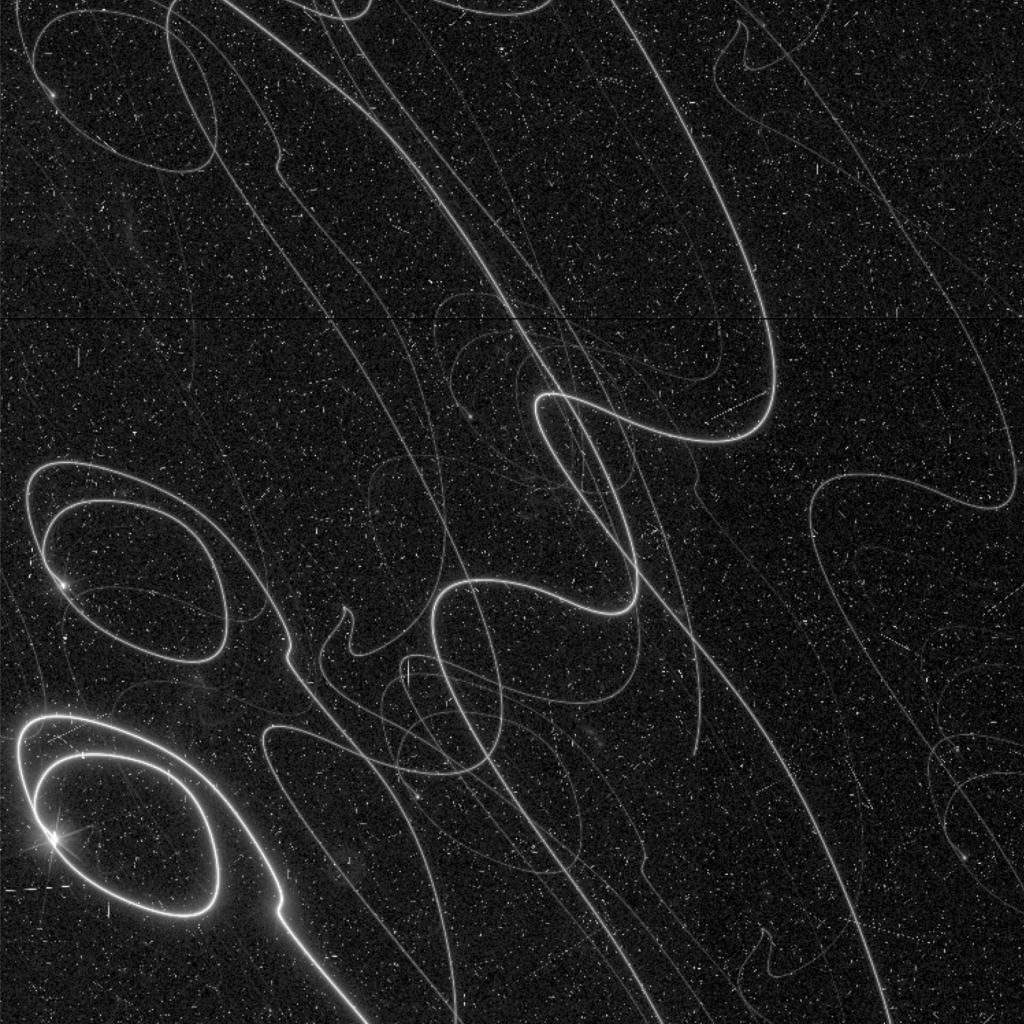On July 1st, 2023, the ESA’s Euclid mission headed for space, where it began its mission to observe the Universe and measure its expansion over time. The commissioning process began well as the mission team spent weeks testing and calibrating the observatory, then flew the mission out to Lagrange Point 2 (LP2). The telescope focused its mirrors, collected its “first light,” and the first test images it took were breathtaking! Unfortunately, Euclid hit a snag when its Fine Guidance Sensor (FGS) failed to lock onto its “guide stars.”
According to the latest update from the ESA, Euclid has found its guide stars again, thanks to a software patch. With its navigation woes now solved and its observation schedule updated, the telescope will now undergo its Performance Verification phase (its final phase of testing) in full “science mode.” Once that’s complete, Euclid will commence its nominal six-year mission, providing razor-sharp images and deep spectra of our Universe, looking back 10 billion years. This data will be used to create a grand survey of one-third of the entire sky and measure the influence of Dark Matter and Dark Energy.
The Euclid mission is one of the most sophisticated and precise observatories ever launched. To ensure accuracy, the telescope must point to a new field in the sky every 75 minutes with extreme stability. To do this, the spacecraft relies on the Fine Guidance Sensor (FGS), a completely new instrument that uses optical sensors to image the sky from the sides of Euclid’s VISible instrument (VIS). This allows the telescope to lock onto stars found by ESA’s Gaia mission, using them for navigation and determining where the telescope needs to be pointed.
 Loopy star trails show the effect of Euclid’s Fine Guidance Sensor intermittently losing its guide stars. Credit: ESA
Loopy star trails show the effect of Euclid’s Fine Guidance Sensor intermittently losing its guide stars. Credit: ESA
This information is relayed to the telescope’s Attitude and Orbit Control System (AOCS), which controls Euclid’s orientation and orbital motion. However, cosmic rays and solar flares can cause false signals (artefacts) to appear in Euclid’s observations, which can also be caused by stray sunlight and X-rays. These false signals intermittently outnumbered real stars in the telescope’s field of view, which led to Euclid’s FGS failing to resolve the star patterns it needed to navigate. This led to a series of test images with swirling star trails and “lassos” as the telescope failed to home in on its target.
The software patch was tested first on Earth with an electric model of Euclid and a simulator, then for ten days in orbit. As Micha Schmidt, Euclid‘s Spacecraft Operations Manager, explained in an ESA press release:
“Our industrial partners – Thales Alenia Space and Leonardo – went back to the drawing board and revised the way the Fine Guidance Sensor identifies stars. After a major effort and in record time, we were provided with new on-board software to be installed on the spacecraft. We carefully tested the software update step by step under real flight conditions, with realistic input from the Science Operations Centre for observation targets, and finally the go-ahead was given to re-start the Performance Verification phase.”
The software patch was first tested using an electric model of Euclid and a simulator, then for ten days in orbit. According to Giuseppe Racca, Euclid’s Project Manager, the results were positive as more and more stars revealed themselves. “The performance verification phase that was interrupted in August has now fully restarted, and all the observations are carried out correctly,” he said. “This phase will last until late November, but we are confident that the mission performance will prove to be outstanding, and the regular scientific survey observations can start thereafter.”
Euclid‘s primary mission will be to observe cosmic expansion (Hubble’s Law) over the past 10 billion years of cosmic history to address two of the most difficult questions in modern cosmology. The first is the elusive Dark Matter, the mysterious invisible mass that accounts for more than 80% of matter in our Universe. The second is Dark Energy, the strange force hypothesized by Einstein that makes up 68% of the mass-energy content of the Universe that “holds back gravity” and drives galaxies farther and farther apart with time.
By measuring the shapes of billions of galaxies over billions of years with unprecedented accuracy, Euclid will provide a 3D view of Dark Matter distribution in our Universe. By mapping the distribution of galaxies over cosmic time, the mission will measure the influence of Dark Energy and its effects on the spatial evolution of the Universe’s large-scale structure. The ultimate purpose of this is to test General Relativity (GR) – which is foundational to modern cosmology – on cosmological scales (billions of light years).
While GR has been confirmed nine ways from Sunday on smaller scales (planets, stars, supermassive black holes), it has encountered problems where the large-scale structures are concerned. Either there are other forces at work (DM/DE), or our cosmological models need revision. It is hoped that Euclid’s 3D map of the Universe and its evolution will resolve these questions once and for all. As Carole Mundell, ESA’s Director of Science, summarized:
“I want to thank all our teams of experts involved in successfully completing the challenging commissioning phase, including the Euclid Consortium, engineers and industry. Now comes the exciting phase of testing Euclid in science-like conditions, and we are looking forward to its first images showcasing how this mission will revolutionize our understanding of the dark Universe.”
Further Reading: ESA

